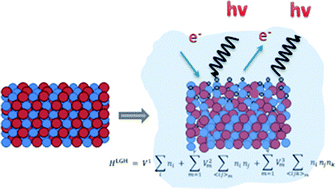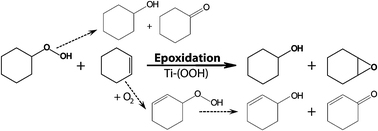This month sees the following articles in Catalysis Science & Technology that are in the top ten most accessed:-
Graphene-based materials for catalysis
Bruno F. Machado and Philippe Serp
Catal. Sci. Technol., 2012, 2, 54-75 DOI: 10.1039/C1CY00361E
Iron(iii) metal?organic frameworks as solid Lewis acids for the isomerization of a-pinene oxide
Amarajothi Dhakshinamoorthy , Mercedes Alvaro , Hubert Chevreau , Patricia Horcajada , Thomas Devic , Christian Serre
Catal. Sci. Technol., 2012, 2, 324-330 DOI: 10.1039/C2CY00376G
Challenge and progress: palladium-catalyzed sp3 C?H activation
Hu Li , Bi-Jie Li and Zhang-Jie Shi
Catal. Sci. Technol., 2011, 1, 191-206 DOI: 10.1039/C0CY00076K
Asymmetric catalysis using iron complexes ??Ruthenium Lite??
Muftah Darwish and Martin Wills
Catal. Sci. Technol., 2012, 2, 243-255 DOI: 10.1039/C1CY00390A
Synthesis of N-heterocyclic compounds over zeolite molecular sieve catalysts: an approach towards green chemistry
V. V. Krishna Mohan Kandepi and Nama Narender
Catal. Sci. Technol., 2012, Advance Article DOI: 10.1039/C2CY00162D
Material science for the support design: a powerful challenge for catalysis
Alberto Villa , Marco Schiavoni and Laura Prati
Catal. Sci. Technol., 2012, Advance Article DOI: 10.1039/C2CY00355D
Recent progress in the electrochemical conversion and utilization of CO2
Neil S. Spinner , Jose A. Vega and William E. Mustain
Catal. Sci. Technol., 2012, 2, 19-28 DOI: 10.1039/C1CY00314C
Ag nanoparticles decorated polyaniline nanofibers: synthesis, characterization, and applications toward catalytic reduction of 4-nitrophenol and electrochemical detection of H2O2 and glucose
Guohui Chang , Yonglan Luo , Wenbo Lu , Xiaoyun Qin , Abdullah M. Asiri , Abdulrahman O. Al-Youbi and Xuping Sun
Catal. Sci. Technol., 2012, Advance Article DOI: 10.1039/C2CY00454B
Mimicking nature’s strategies for the design of nanocatalysts
Rohit Bhandari , Ryan Coppage and Marc R. Knecht
Catal. Sci. Technol., 2012, 2, 256-266 DOI: 10.1039/C1CY00350J
A review of controllable synthesis and enhancement of performances of bismuth tungstate visible-light-driven photocatalysts
Liwu Zhang and Yongfa Zhu
Catal. Sci. Technol., 2012, Advance Article DOI: 10.1039/C2CY00411A
Why not take a look at the articles today and blog your thoughts and comments below.
Fancy submitting an article to Catalysis Science & Technology? Then why not submit to us today or alternatively email us your suggestions.

















